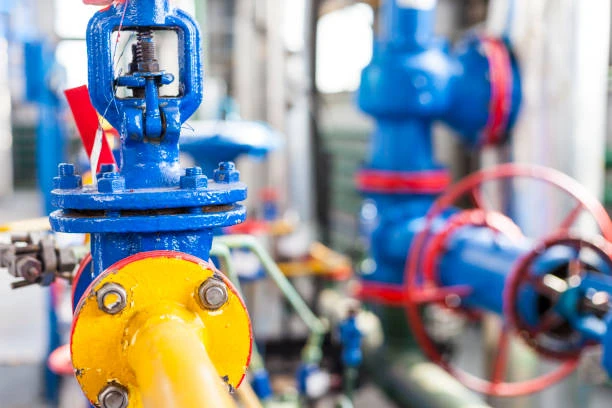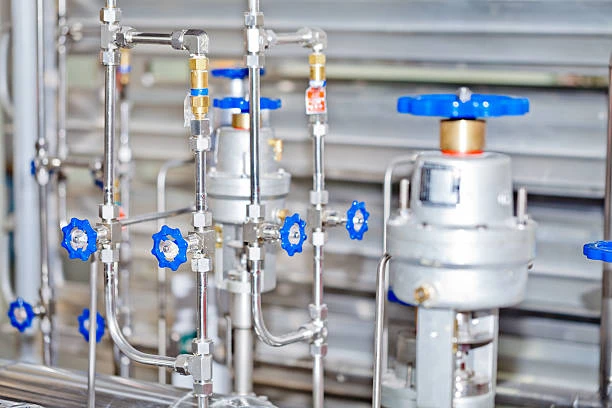As the world accelerates its transition to renewable energy, high-voltage direct current (HVDC) technology has become a cornerstone for efficient energy transmission. This cutting-edge technology is enabling the long-distance transport of electricity generated from renewable sources, such as wind and solar power, to where it is most needed. In this context, GE Vernova’s new HVDC valve factory plays a pivotal role in meeting the increasing demand for HVDC systems. Among the key innovations being developed at this facility is the hybrid valve—a technology that promises to improve the reliability and efficiency of HVDC systems.
This article will take a closer look at the state-of-the-art HVDC valve factory, its role in the energy transition, and the significance of hybrid valves in modern energy infrastructure.
What is HVDC and Why is it Important?
High-Voltage Direct Current (HVDC) is a technology used to transmit large amounts of electricity over long distances with minimal losses. Unlike traditional alternating current (AC) transmission, HVDC systems are more efficient, especially when it comes to transporting electricity across long distances or through underwater cables. This is particularly crucial for renewable energy projects, which are often located far from population centers, such as offshore wind farms or solar power plants in remote areas.
HVDC transmission is essential for integrating renewable energy into the grid. It provides the flexibility needed to connect grids of different frequencies, stabilizing power supply while also reducing the environmental impact of energy transport. The ability to transport large volumes of renewable energy with minimal energy losses is key to the global shift towards sustainable power sources.
The Role of HVDC Valves in Energy Transmission
At the heart of HVDC technology lies the HVDC valve—a critical component in converting AC to DC power (and vice versa) within the system. HVDC valves use semiconductor components to control and rectify the flow of electricity, enabling efficient and reliable transmission of power. As HVDC systems become more complex and larger in scale, the performance and reliability of these valves are paramount.
In the past, traditional HVDC valves were based on thyristor technology. However, with the growing demands for higher capacity and greater efficiency, modern HVDC valves incorporate advanced semiconductor devices such as insulated-gate transistors (IGBTs). These new valves not only increase the performance of HVDC systems but also improve their operational flexibility.

Hybrid Valve: The Next Step in HVDC Evolution
One of the key innovations emerging from GE Vernova’s HVDC valve factory is the hybrid valve. The hybrid valve combines the best features of traditional thyristor-based valves and newer, more efficient semiconductor technologies like IGBTs. This hybrid design offers several advantages:
- Enhanced Efficiency: By combining the best features of both technologies, hybrid valves enable smoother operation with fewer losses compared to traditional valves. They can switch more efficiently and provide better control over the power flow, which is crucial for stabilizing the grid and integrating renewable energy sources.
- Increased Reliability: Hybrid valves are designed for greater resilience. By improving the balance between thyristors and IGBTs, they can better withstand high-voltage conditions and electrical surges, ensuring more reliable and robust performance over time.
- Cost-Effectiveness: Although the hybrid valve incorporates advanced technology, it offers cost advantages by optimizing the use of materials and components. By merging two types of valve technology into one, GE Vernova has been able to create a more cost-effective solution without compromising performance.
- Faster Response Times: The hybrid valve offers quicker switching speeds, which is especially beneficial for dynamic grid applications and high-demand periods. This is essential for maintaining grid stability as renewable energy sources like wind and solar can be unpredictable, with generation levels fluctuating throughout the day.
- Scalability: The hybrid valve design is highly scalable, making it suitable for a variety of projects, from small-scale regional grids to large, cross-border HVDC systems that can transmit power across entire continents.
GE Vernova’s HVDC Valve Factory: A Cutting-Edge Facility
GE Vernova’s new HVDC valve factory, located in the heart of a rapidly developing renewable energy hub, is designed to ramp up the production of these innovative components. With an eye on the future of energy, this facility is equipped with the latest automation, robotics, and testing technology to ensure the highest levels of precision and quality control.
The factory’s production process is designed to meet the growing global demand for HVDC systems that are vital for the energy transition. As offshore wind farms and large solar plants become more common, the need for long-distance, high-capacity transmission grows. This means the factory is not only producing components for existing HVDC projects but also creating the technology needed for new, more ambitious projects around the world.
Key Features of the Factory
- Advanced Manufacturing Processes:
The factory employs precision manufacturing techniques. Which using automated systems to build and test each HVDC valve to meet strict industry standards. - Sustainability Focus:
GE Vernova has designed the factory with sustainability in mind. The facility utilizes renewable energy sources, optimized production processes, and waste reduction initiatives to minimize its environmental footprint. - Global Supply Chain Integration:
By incorporating advanced logistics and supply chain technologies, the factory can quickly scale production and meet the needs of major infrastructure projects worldwide. - Innovation Hub:
As part of GE’s commitment to innovation, the factory doubles as a hub for ongoing research and development in HVDC technology. Engineers and researchers continuously test new valve designs and materials to push the boundaries of what’s possible in energy transmission.
The Energy Transition: Powering the Future
The global shift toward renewable energy presents both an opportunity and a challenge for the power industry. While the move to clean energy is essential for reducing global carbon emissions and combating climate change. It also requires the development of new infrastructure. HVDC systems, particularly those using advanced hybrid valves, are central to this transition.
By investing in next-generation HVDC valve technology, GE Vernova is playing a critical role in the global energy transition. The company’s factory is helping to meet the increasing demand for reliable, high-capacity transmission systems. Which are necessary to connect renewable energy sources to the grid and enable more widespread adoption of clean energy technologies.
The Role of Hybrid Valves in the Decarbonization Effort
Hybrid valves are crucial in the decarbonization effort. As they make it easier to integrate renewable energy into existing grids and power systems. With their enhanced efficiency and reliability. Hybrid valves facilitate the smooth transmission of power from renewable energy sources, even across long distances and complex grid networks. They help ensure that renewable energy can be transmitted in a way that is both sustainable and economically viable.
Additionally, hybrid valves contribute to the stability of power grids. Which reducing the risk of blackouts and ensuring a steady supply of electricity, even when renewable generation fluctuates. This makes them an essential component in the creation of a more resilient and sustainable energy infrastructure.
Conclusion
GE Vernova’s new HVDC valve factory represents a significant step forward in the energy transition. With its focus on advanced technologies like the hybrid valve, the facility is helping to meet the growing demand for reliable and efficient power transmission systems that can handle the complexities of renewable energy integration. As the world continues to transition to a low-carbon future. Which innovations in HVDC technology will play an increasingly important role in shaping a sustainable and resilient energy system.
The hybrid valve is one of the most promising innovations in this space. Which offering improved performance, increased reliability, and cost-effectiveness for HVDC systems. As GE Vernova ramps up production, it is clear that the future of energy transmission is in safe hands—bringing us closer to a cleaner, more sustainable energy future.
FAQs
- What is the difference between AC and HVDC transmission?
- AC (alternating current) transmission is the traditional method of transporting electricity. While HVDC (high-voltage direct current) is a more efficient method for long-distance transmission, especially for renewable energy sources. HVDC reduces transmission losses and allows for the interconnection of grids with different frequencies.
- What are hybrid valves used for in HVDC systems?
- Hybrid valves are used to convert AC power to DC and vice versa in HVDC systems. They combine the benefits of both thyristor-based and semiconductor-based technologies, offering improved efficiency, reliability, and faster response times.
- How does GE Vernova’s HVDC valve factory support the energy transition?
- The factory produces advanced HVDC valves, including hybrid valves. Which are crucial for the integration of renewable energy sources into the grid. These valves enable efficient long-distance transmission, helping to reduce carbon emissions and support a cleaner energy future.
- What are the advantages of hybrid HVDC valves over traditional valves?
- Hybrid valves provide enhanced efficiency, increased reliability, faster switching times, and cost-effectiveness compared to traditional thyristor-based valves. They help improve the overall performance and scalability of HVDC systems.
- How does HVDC technology contribute to a sustainable energy future?
- HVDC technology enables the efficient transmission of renewable energy over long distances. Which facilitating the integration of clean energy sources like wind and solar into the grid. It helps reduce energy losses and supports the decarbonization of the power sector.


















